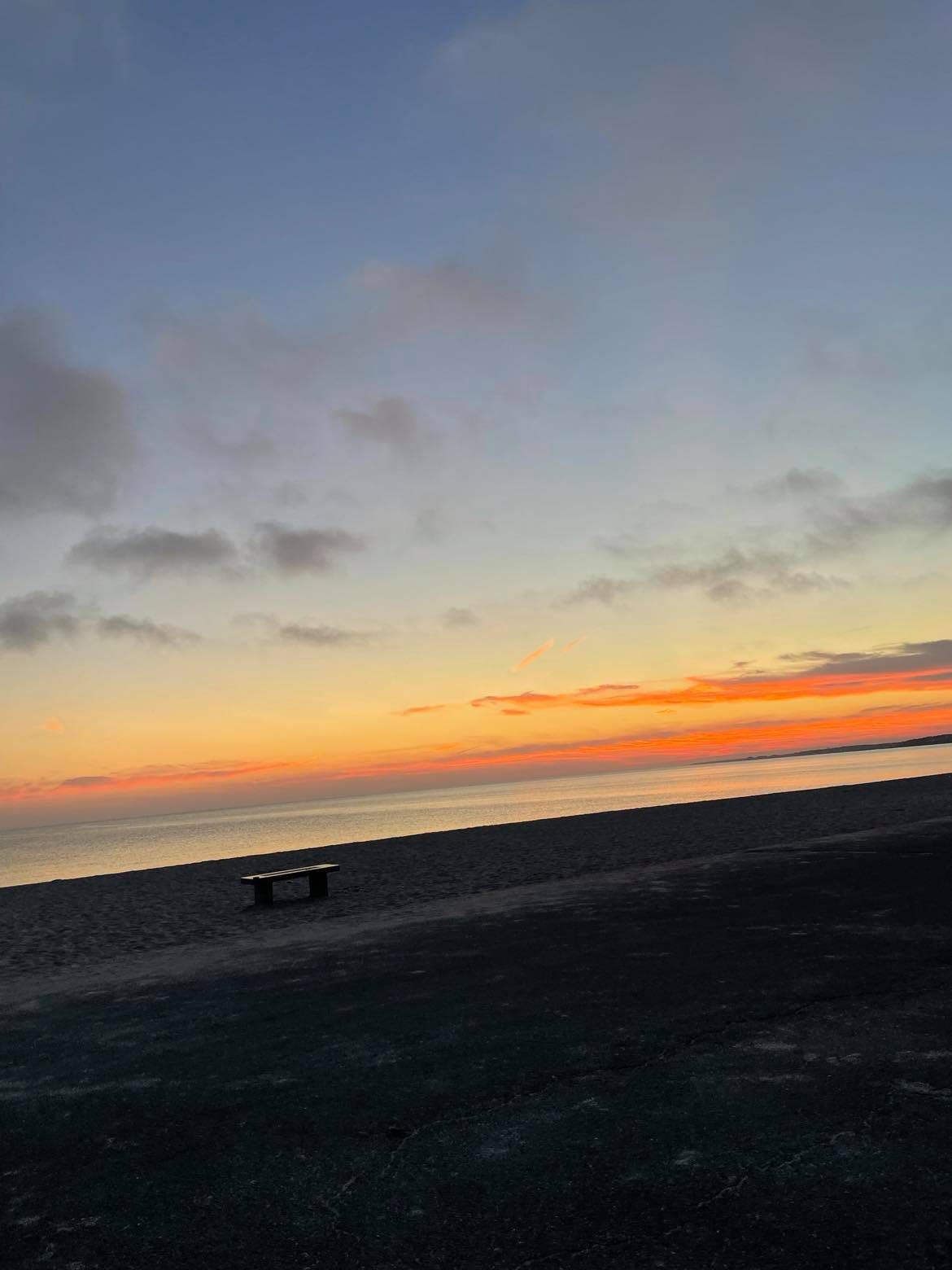It’s Thursday night and we’re taking our favorite beach walk as the waning light of dusk starts to shimmer on the water. I can’t get over how beautiful it is every time. Grey storm clouds are piling up on the outer edge of the marsh to the left and the grasses, turning red now, are dotted with fluffy heads of goldenrod bending in the wind. In October, this part of the beach is mostly empty, and we walk silently along the sandy path behind the dunes up to the lighthouse.
“Let’s walk the rest of the way back along the beach,” I say to my spouse Janyce who is a few steps in front of me. We had been walking side-by-side earlier and talking about our vacation house— the rugs we have to replace, the shower curtain that wasn’t clean enough— but now we’re both speechless, listening only to the sound of a few shorebirds calling overhead.
We continue on in silence, trudging through the deeper sand along the dune path to the shore. The surface is still. The orange glow of the sunset is starting to creep up the sky at the horizon. I listened to a radio program on my drive up a few days earlier on a Cape Cod station. The naturalist was offering tips for birdwatchers. “In October, you’ll want to be near some water with a marsh behind you,” he said. “Here’s where you’ll see the most diversity of birds.”
He wasn’t wrong. I pause to watch the piping plovers. It’s dinner time and a whole crowd of them with tiny snails in their beaks are running back and forth on their little stick legs, in and out of the water’s edge with the undulating tide.
“I don’t know what that bird is,” says Janyce pointing. “But if you look close, they blend right in with the seaweed.”
“Wait, I think I saw a seal,” I say, as I look past the birds to a large circle of ripples in the water. Schools of silvery shad are swimming around at the surface. Sure enough, as we stop walking and stand quietly, patches of water suddenly turn a dark blue and seal heads start poking up one by one, curiously, to look at us. They’re patiently circling under the water a few feet out. I’ve counted nine of them now. These are Gray seals with their long bodies and their big dog-like heads, and as we move a few feet further down the beach, we watch in awe as they each enter the circle of fish from below and slap around wildly. One at a time their whiskered faces resurface, with a silvery fish flipping around in their mouths and glinting in the setting sun.
I could stand here all night. But this is their habitat and I feel like an intruder.
“What time is it?” I say.
“Shoot, it’s late, our take out order has been ready for a half-hour,” says Janyce.
We continue back toward the parking lot, passing a few men with fishing poles who are walking urgently over to the shoreline shaking their heads. The seals have beat them to it. A WCVB News truck is parked in the lot, the young female newscaster is standing on the sand with a microphone and a small crowd has circled around. We can’t make out what she is saying as we roll by slowly in the car, windows rolled down and our heads leaning out the window. Only later we learned that a coyote had bitten the ankle of a teenager having a picnic on a blanket in the sand. Turns out, too many people are feeding the coyotes, either inadvertently, and in some cases on purpose.
We’ve got to share the space with the wildlife, but too often we don’t. We forget that the wildlife is wild. Our little house in the pines is affectionately named Quail Cottage, but the quail are long gone now. Last year, I saw an abundance of wild turkeys roaming the front lawn. But not this year. I caught the look of disappointment on the face of the man with his sport fishing pole as we passed him. But I hope we get another chance on the beach to watch the seals doing their thing again tonight. I’m more than happy to share.




